Contents
Of course, everywhere there is a recipe for a simple mint liqueur at home, which is made according to the standard. But, nevertheless, I want something more interesting, refined or something … Today I will share several good recipes for homemade mint liqueur – with and without distillation.
When I first heard about mint liqueur, I went into a state of mild cognitive dissonance. I never liked mints and candies, I used them only when I had to drown out the smell of alcohol in adolescence – so that my mother would not smell it. The years have passed, and if it were not for the abnormal heat that made it impossible to breathe calmly this summer, I would not have remembered the mint liqueur. But now I’m just daydreaming about this drink. So you want to feel its divine coolness, its dankness, its freezing cold, so you want, finally, at least a little … to freeze!
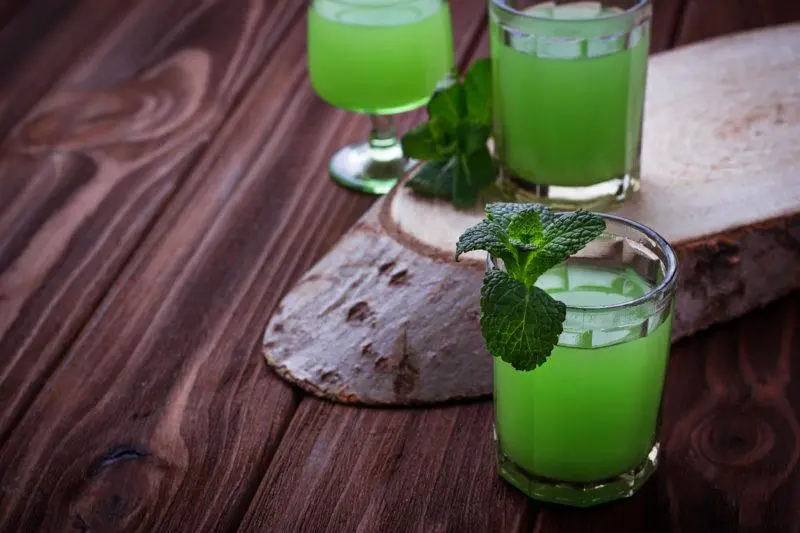
Homemade mint liqueur – a little about the varieties and ingredients
In general, while the mint tincture is being prepared, I will share a few interesting recipes in my opinion. I will say right away that there are very few of them on the Web, I had to look for them in old cookbooks and foreign sites. Of course, everywhere there is a recipe for a simple mint liqueur at home, which is made according to the standard – mint leaves are poured with vodka, stand for 10 days, de-boiled with sugar syrup – a familiar song. But I want, nevertheless, something more interesting, refined or something – after all, this is a mint liqueur, and not a liquid Colgate!
All mint-based alcohol is divided into relatively unsweetened mint tinctures (perhaps the most in the heat), regular liqueurs, menthol liqueurs (“Creme de Menthe”). And supplements – what they just don’t shove to mint! And cumin, and citrus zest, and dill, and juniper. Many fruits are combined with it (recipes for fruit tinctures with mint are in articles about plum, apricot and cherry liqueurs). But the ideal refreshing addition to this herb is, of course, lemon.
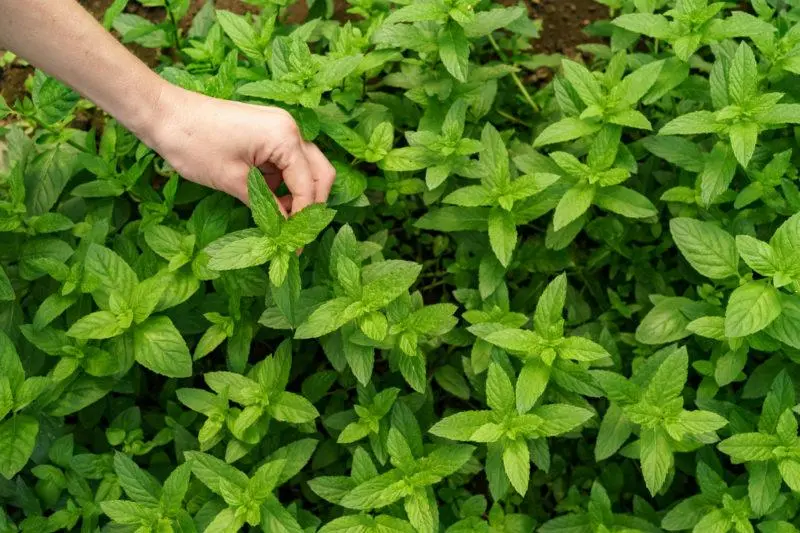
Now a little about mint. Despite the fact that there are a lot of its species, only 2 are available for purchase from us – “Peppermint” (“Peppermint”) and “Spearmint, or Spearmint” (the same “spearmint”, so amusing kids). Both varieties are suitable for us – pepper is a little tougher and more pronounced. Both can be bought in a pack at a pharmacy and fresh or dried from grannies in the market. Most of those who have experimented with mint tinctures are advised to take “homemade” – it reveals the taste and aroma in the drink richer and does not give an unpleasant aftertaste of withered grass. For tinctures, only leaves and inflorescences are needed.
If there is no other way out, you can still buy weed in a pharmacy. But it often has a lot of stems, spoiled leaves and all sorts of extraneous debris of mysterious origin – you have to sort it out. Melissa (the so-called “lemon mint”) is not suitable for mint liquor – this plant is much warmer and more neutral, it will not give the desired “chilling” effect. For insisting, only alcohol, vodka or good moonshine is used – it makes no sense to take an elite, since mint will completely clog it anyway. We will deal with the rest of the ingredients in the process.
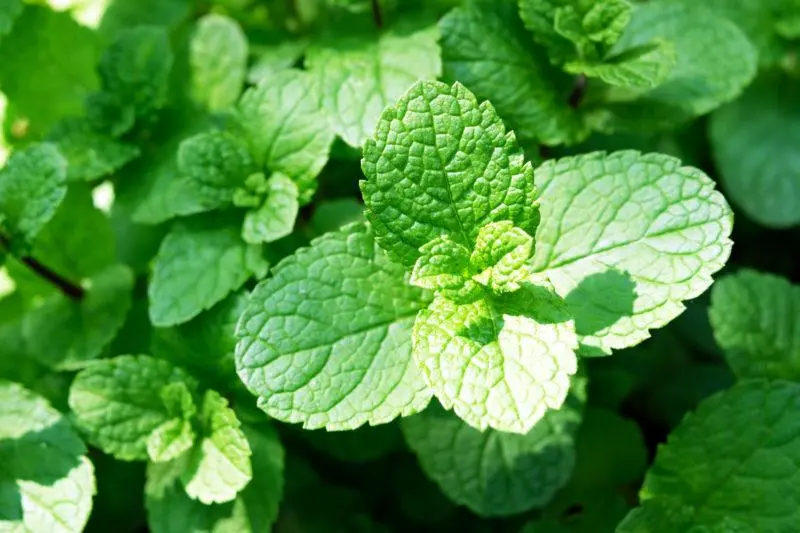
Mint liqueur at home – recipes without distillation
For those who, like myself, are not yet a happy owner of a moonshine still, all that remains is to make mint tincture – a drink that may not be so refined, but very tasty, and besides, it allows a lot of cooking options.
No. 1. Ratafia mint according to an old recipe
This ancient drink, like all ratafias, is made with pure alcohol (90°C), and diluted with sugar syrup after infusion.
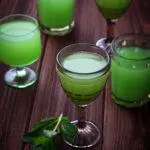
- 30-40 grams mint (dried)
- Xnum l alcohol
- 200 grams of sugar
- 200 ml of water
Mint is thrown into a jar, poured with alcohol and infused for 3 days (I would have withstood a week) in a warm place. After that, the liquid is filtered. Separately, a syrup is prepared from water and sugar in equal parts. After it boils, the foam is removed from the surface and the infusion is poured into the hot syrup slowly, in a thin stream, with constant stirring. Next, you need to make a dense filter and pour the entire mixture into a bottle through it. Everything together settles in a warm place for another week. The drink can be filtered again and rearranged in a dark, cool place for several weeks.
When first mixed, mint tincture can be tasted for sweetness and strength – the sugar and water content can always be increased. Ratafia is best stored in dark bottles if you want to keep its natural greenish hue.
No. 2. Lemon mint liqueur
This tincture recipe uses the always successful mint-lemon combination. Dilute the liquor with soda or tonic, put in plenty of ice – and now you have a refreshing summer drink that is slightly reminiscent of Mojito.
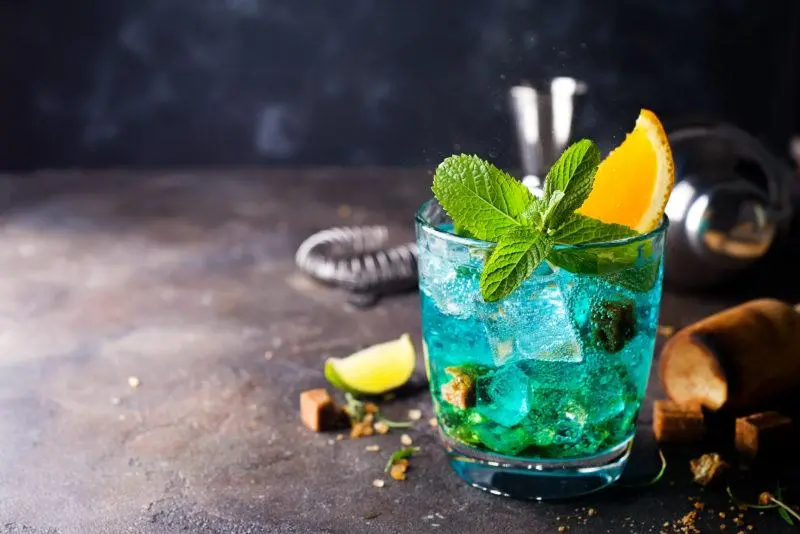
- vodka (45% alcohol or moonshine) – 1 l
- peppermint – 1 bunch (approximately 100 g fresh leaves)
- lemon – 3-4 small
- sugar – 2 cups (less if you don’t like sweets)
The zest is cut off from the lemons (you can directly slice it, and not on a grater), the white skin is removed. The pulp is finely chopped. Leaves are plucked from mint, slightly kneaded in the hand and, together with the zest and pulp of lemons, are sent to a jar. The whole thing is poured with alcohol and sent to a warm, dark place for 4-5 days. After that, the mixture is filtered through several layers of gauze, the cake is well squeezed out. Sugar is added to the liquid, mixed thoroughly. The drink needs to be defended again – at least a week, after which it must be filtered through a fine filter (eg a cotton swab).
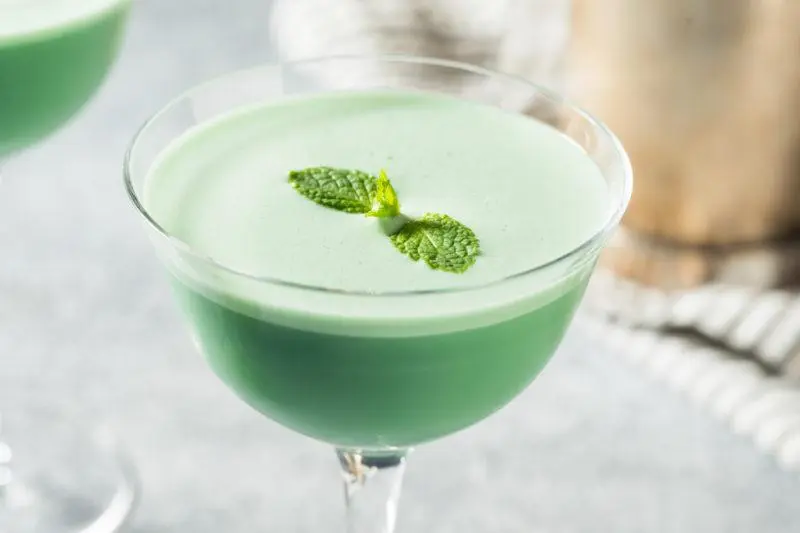
This lemon-mint liqueur goes very well chilled and pairs well with juices and champagne.
No. 3. Spicy mint tincture
This is a more “masculine” drink, with a dominant note of mint, a spicy aroma and a dark brown color.

- vodka – 500 ml
- dried peppermint – 10 g
- dill seeds – 5 g
- juniper (berries) – 3 g
- ginger (ground) – 1,5 g
- cinnamon (ground) – 1 g
- sugar – 15 g
The preparation is easy. All ingredients (together with sugar) are placed in a jar and filled with vodka. The jar is closed, shaken well and sent to a dark place for 14 days. Now the mint tincture needs to be filtered twice – through cheesecloth, thoroughly squeezing the thick through it, and then through cotton wool to free it from small particles. Do not forget that such a drink will only become tastier over time.
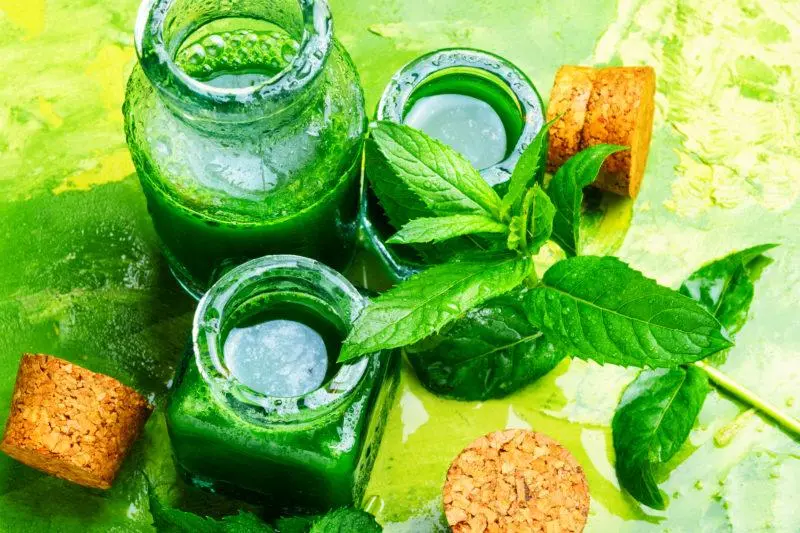
Distilled menthol (mint) liqueur
And for those who have a home distiller, this recipe will undoubtedly be the most interesting. It is, of course, more difficult to prepare such a mint liqueur at home, but the output will be an almost “elite” product – comparable to gin or sambuca.
Stage one. Maceration.
For 0,5 liters of 96-degree alcohol, we need 50 grams of dried peppermint and 150 ml of water, as well as, to choose from, either 10 grams of cumin (more spicy flavor) or dried zest from a quarter of an orange and a quarter of a lime. All ingredients are sent to a jar, filled with alcohol, water and infused for a week. After this time, the mint tincture must be filtered and the remnants squeezed through cheesecloth (it will turn dark dark green, almost black). Pour 50 ml from it for subsequent tinting.
Stage two. distillation.
The infusion is diluted with water approximately 1:1 (to get 1,2-1,5 liters of liquid) and sent for distillation. Heads can be selected (up to 30 ml). Tails must be selected – they can concentrate a “rotten” herbal aroma. We get 600 ml of the main fraction, and the rest is discarded into tails. To save money, after selecting the main fraction, you can set the vessel with it aside, and gradually drive the remaining distillate into another container, 50 grams each – if the liquid smells good, you can add it to the drink.
Stage three. Dilution and coloring.
In the resulting mint vodka, you need to add 150-200 grams of pure unboiled water and 150 ml of syrup. The syrup is made from sugar and water in a ratio of 3:1. Now we have 2 options – leave everything as it is (the mint liqueur will be colorless) or – give it an emerald green tint by adding the 50 ml of tincture that we poured after filtering. In any case, homemade mint liqueur must be defended for at least a week, and even more is better. Because of this, its taste will be rounded, the aroma will become softer, and also the turbidity that often appears after the distillate is mixed with syrup will disappear.
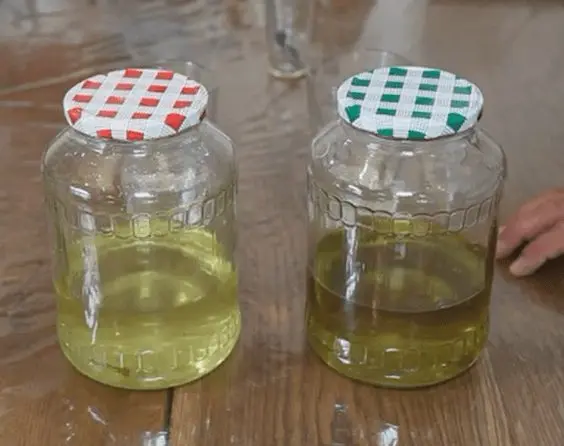
Two versions of menthol liqueur – natural color and tinted with infusion
Enjoy your struggle with the summer heat!









